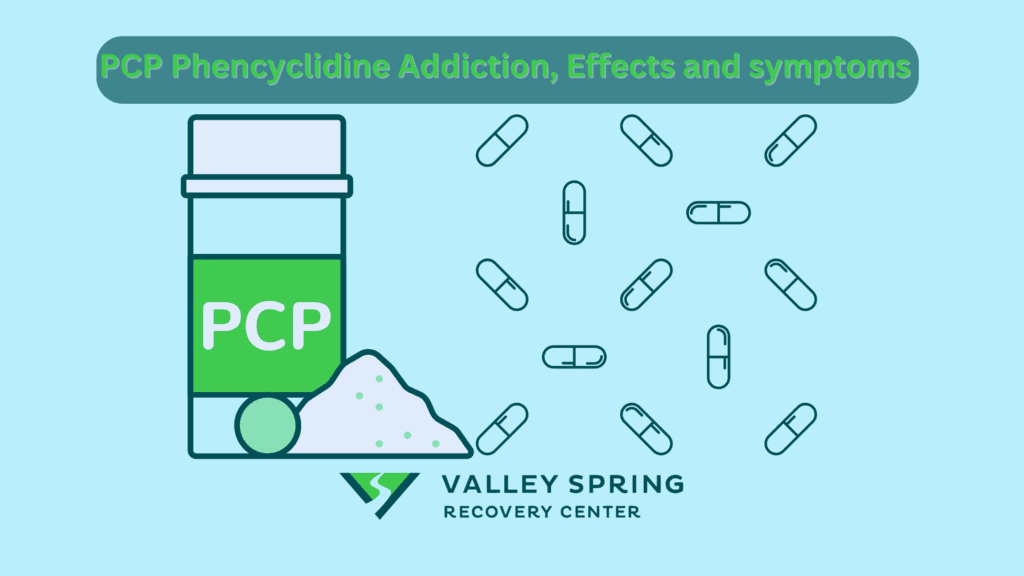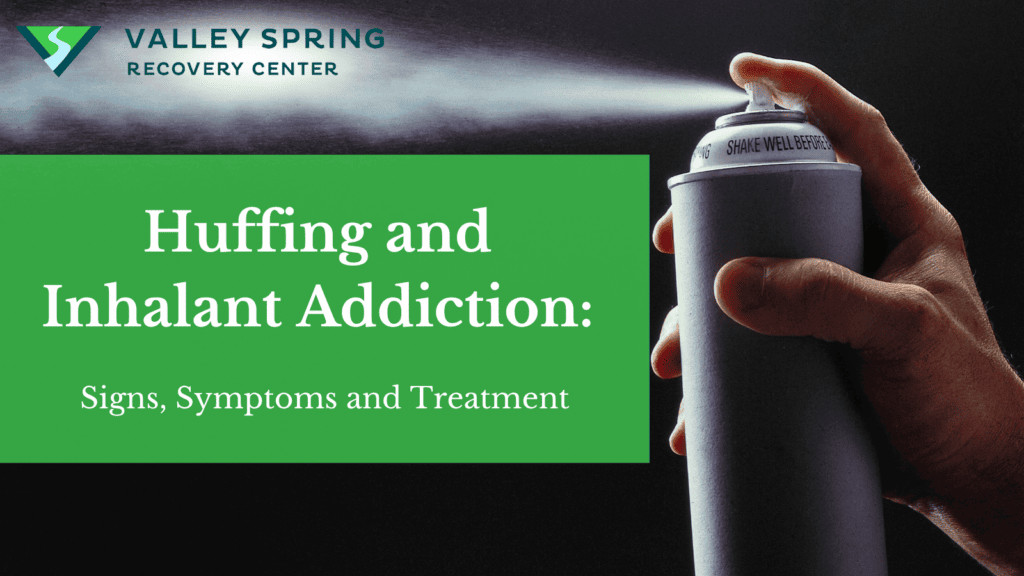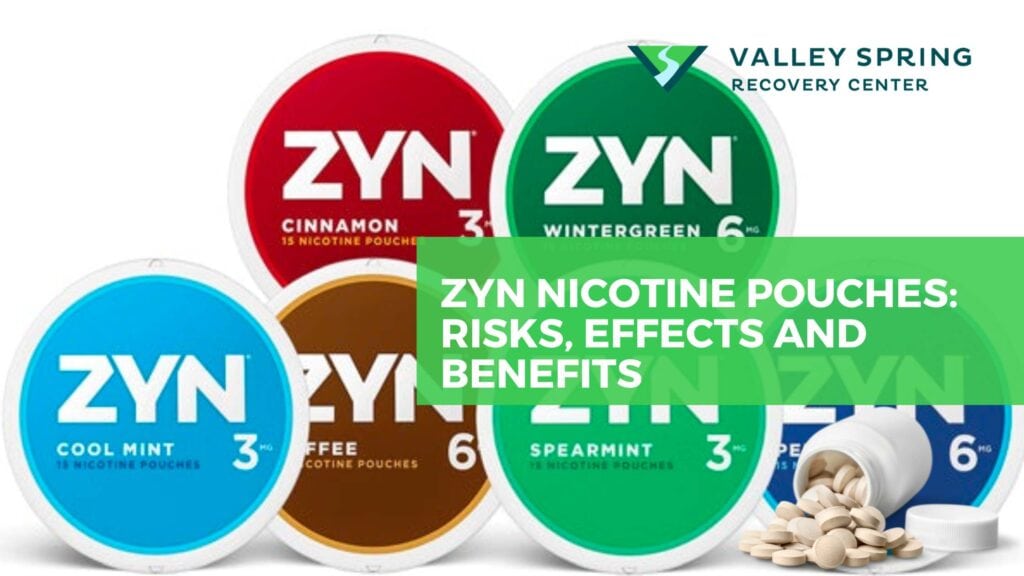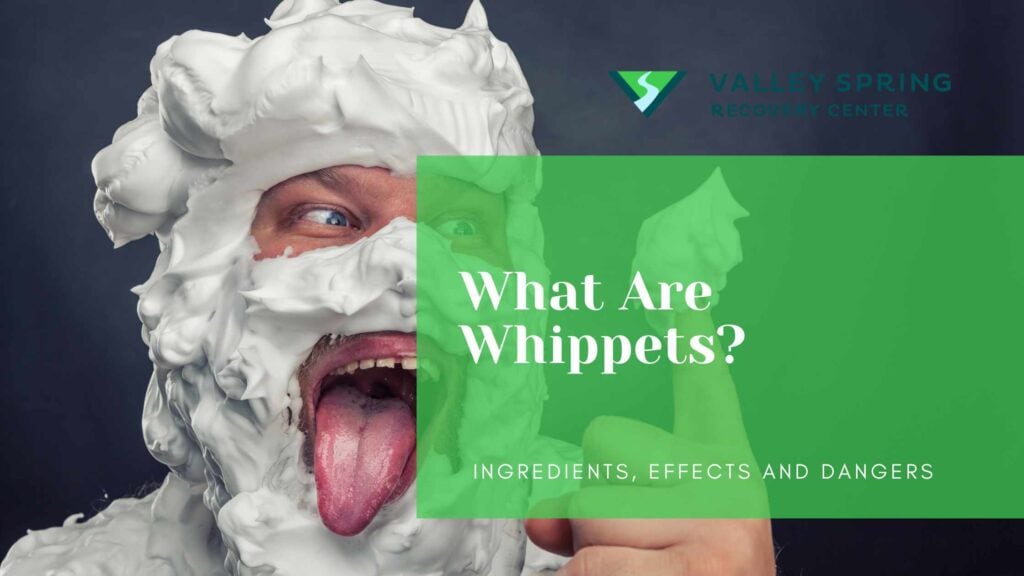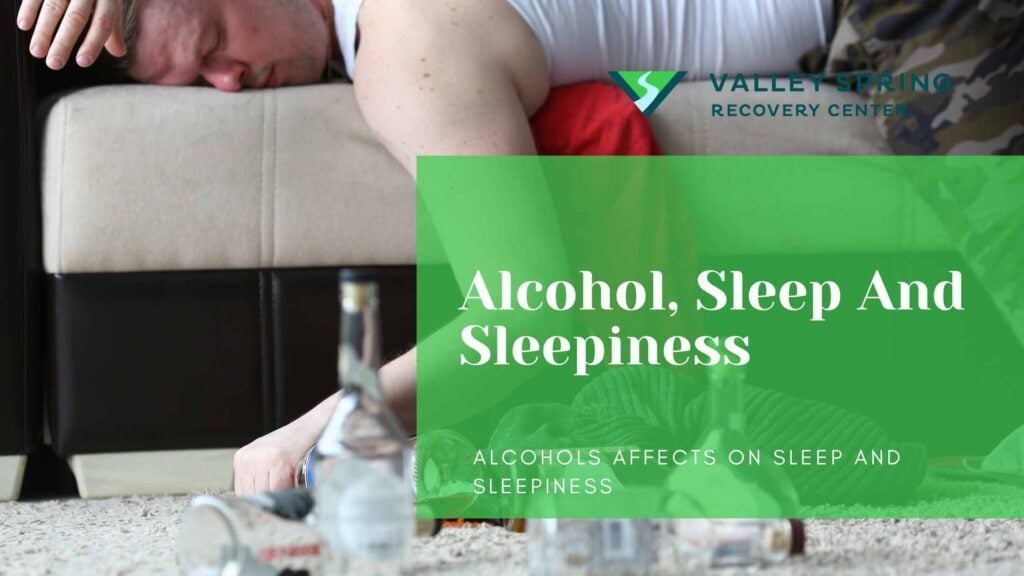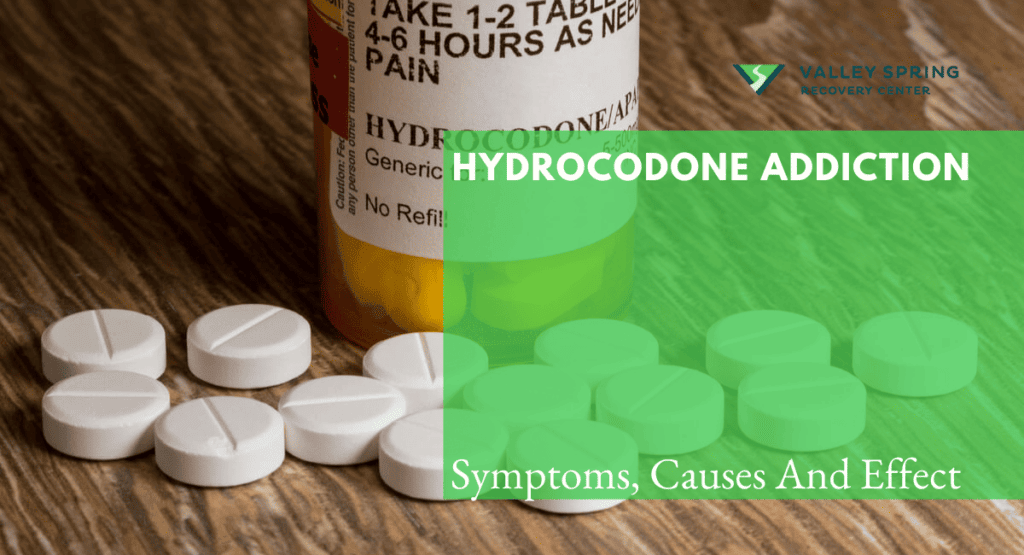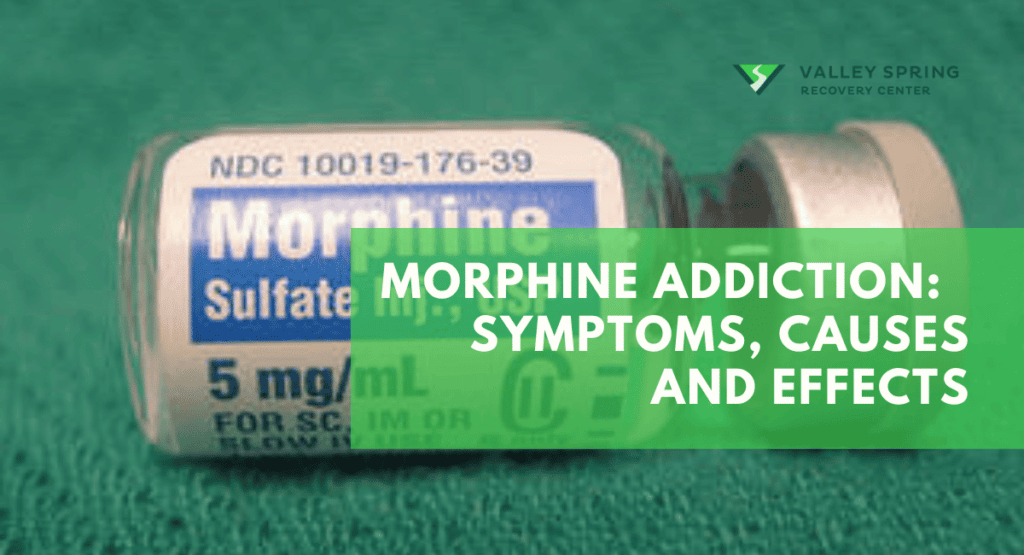PCP, or Phencyclidine, is a powerful dissociative drug that can lead to addiction when abused. This synthetic substance, originally developed as an anesthetic, induces hallucinations, disorientation, and altered perceptions.
Understanding the signs, symptoms, and statistics of PCP addiction is crucial for public health and safety. It helps identify individuals in need of help, assess the scope of the problem, and guide effective prevention and treatment efforts.
What is PCP?
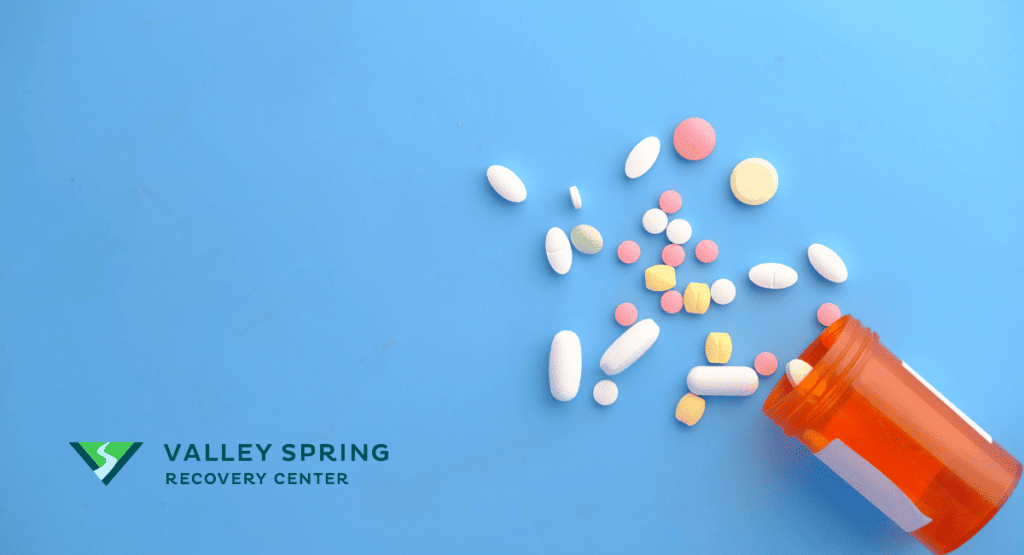
Phencyclidine, commonly known as PCP or “Angel Dust,” is a dissociative anesthetic drug. Initially developed in the 1950s as a surgical anesthetic, it was later discontinued due to its severe side effects. Today, it’s most often encountered as a recreational substance notorious for its unpredictable psychological effects.
PCP is known by various street names, including “angel dust,” “hog,” and “rocket fuel.” When abused, PCP produces hallucinogenic and dissociative effects. It can induce feelings of detachment from one’s body and surroundings, distort perceptions of sight and sound, and cause a sense of euphoria or agitation.
PCP is typically found in the form of a white crystalline powder, but it can also be found as a tablet or a colored liquid.
It is primarily taken by smoking, although it can also be snorted, ingested, or injected. Its effects can vary depending on the dose and route of administration. The drug’s potency is highly unpredictable, and it can lead to intense and unpredictable psychological effects, including aggressive behavior, delusions, and paranoia.
How Can PCP be identified?
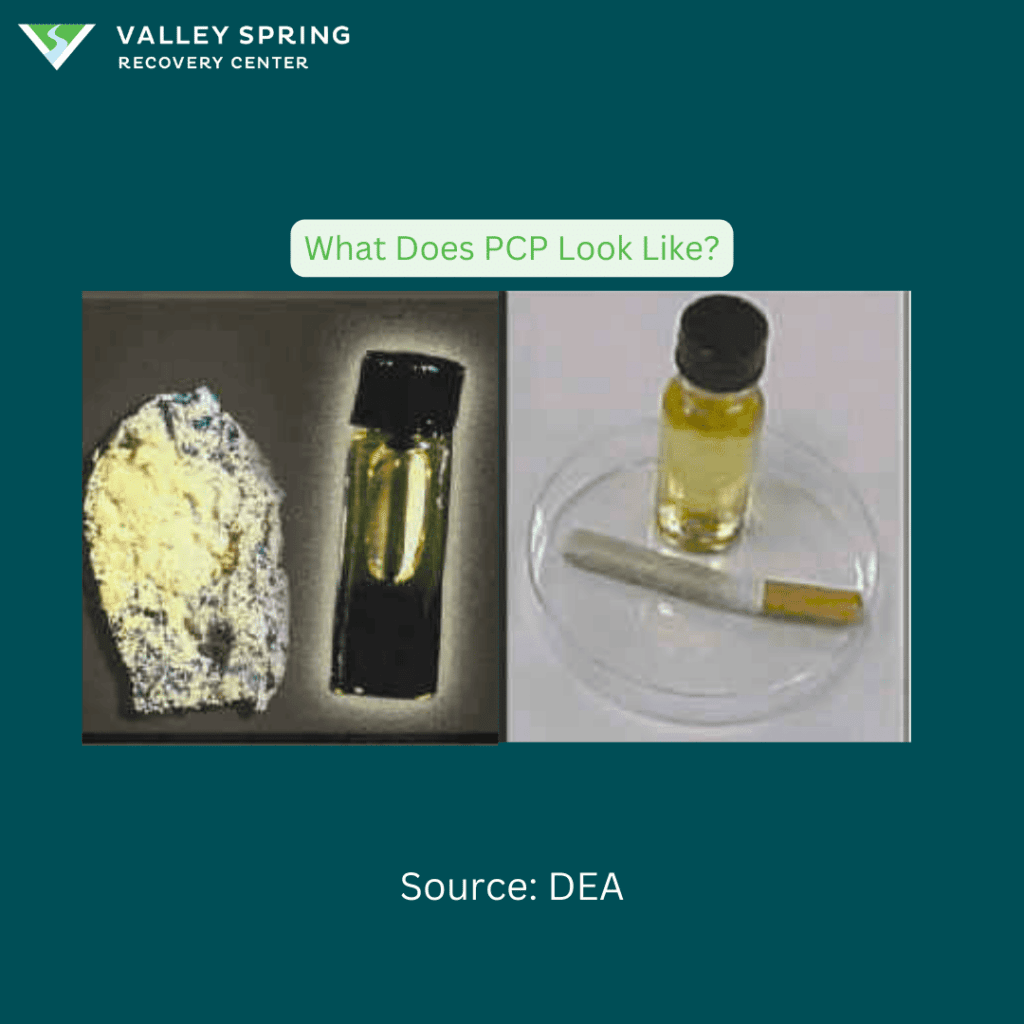
PCP can come in a variety of forms: powder, liquid, and sometimes the powder is put into tablet pills. The color can range from pure white to a brownish hue depending on its purity and how it’s been manufactured. It has a distinctive, chemical-like odor, making it easier to identify. According to the DEA Users snort PCP powder, swallow tablets and capsules, or smoke the drug by applying it (in powder form) to a leafy substance such as marijuana, mint, parsley, or oregano. In addition, users increasingly are dipping marijuana or tobacco cigarettes in liquid PCP and smoking them so it could be identified by seeing a cigarette that looks wet.
What Is PCP Addiction?
PCP addiction is a long-lasting condition characterized by an overwhelming compulsion to use Phencyclidine, despite the presence of significant risks like hallucinations. PCP is a prohibited substance with a strong potential for abuse.
PCP addicts continue to consume the drug even when faced with clear detrimental effects. This addiction often encompasses both physical and mental dependencies.
What to Expect When Reducing PCP Use?
Cutting back on PCP can lead to withdrawal symptoms, signifying a level of dependency on the substance.
What Are The Causes Of PCP Addiction?
the causes of PCP (Phencyclidine) addiction, like addiction to other substances, are influenced by a combination of factors, both biological and environmental. While the exact causes of PCP addiction can vary from person to person, the following are some common contributing factors:
- Biological Factors:
- Genetics: Genetic factors can play a role in an individual’s susceptibility to addiction. Some people may have a genetic predisposition that makes them more vulnerable to developing substance use disorders, including PCP addiction.
- Neurochemistry: PCP affects the brain’s neurotransmitter systems, particularly the glutamate and dopamine systems. Alterations in these systems can contribute to addiction by reinforcing drug use.
- Psychological Factors:
- Mental Health Disorders: Individuals with co-occurring mental health conditions, such as depression, anxiety, or schizophrenia, may be more prone to using PCP as a way to self-medicate their symptoms. This can increase the risk of addiction.
- Stress and Trauma: High levels of stress or exposure to traumatic events can drive individuals to seek solace in drugs like PCP, which can lead to dependence over time.
- Personality Traits: Certain personality traits, such as impulsivity, sensation-seeking behavior, and a lack of self-control, can increase the likelihood of substance abuse and addiction, including PCP addiction.
- Environmental Factors:
- Peer Pressure: Pressure from friends or social circles to experiment with drugs, including PCP, can lead to initial use and eventual addiction.
- Family and Childhood Environment: Growing up in an environment where drug use is normalized or where there is a lack of parental supervision can increase the risk of addiction.
- Access and Availability: Easy access to PCP or exposure to a community where the drug is prevalent can contribute to addiction.
- Developmental Factors:
- Early Initiation: Starting drug use at an early age can increase the likelihood of developing addiction. Adolescents and young adults are particularly vulnerable.
- Chronic Use: Frequent and chronic use of PCP can lead to tolerance (needing more of the drug to achieve the same effects) and dependence, which can eventually progress to addiction.
Who Takes PCP?
The use of PCP spans various age groups and LGBTQ social circles and is prevalent in night clubs, but it’s particularly prevalent among young adults. Some users seek its mind-altering properties for spiritual exploration, while others are drawn by the euphoria and perceived increase in strength it can provide. However, these effects can vary widely due to the unpredictable nature of the drug.
How Do People Take PCP?
PCP (Phencyclidine) can be consumed through various methods, including:
- Smoking: One common method of consuming PCP is by smoking it. PCP is often mixed with tobacco or marijuana and rolled into a cigarette or joint. The cigarette is then smoked, and the PCP is absorbed through the lungs.
- Snorting: PCP powder can be finely crushed and snorted through the nose. The drug is absorbed into the bloodstream through the nasal tissues, leading to its psychoactive effects.
- Ingestion: PCP can also be ingested orally, either by swallowing tablets or capsules containing PCP or by mixing the powder with food or beverages. When ingested, PCP is absorbed through the digestive system and metabolized in the liver.
- Injection: While less common, PCP can be dissolved in a liquid form and injected intravenously. This method delivers the drug directly into the bloodstream, resulting in rapid and intense effects.
When Did PCP get invented and when did it become popular?
PCP was first synthesized in 1926 but gained prominence in the 1950s as an anesthetic. Due to adverse and often unpredictable side effects, its medical use was discontinued in the 1960s. It then found a second life as a street drug in the 1970s and continues to be used recreationally to this day.
Where is PCP Most Commonly Found? Global Hotspots and Local Concerns
PCP is illegal in many countries but still finds its way onto the streets through illicit manufacturing. It’s most commonly found in urban settings in the United States, although it has also been reported in various other countries.
Why is PCP Considered Dangerous?
PCP is notorious for its unpredictable effects, which can range from mild euphoria and sensory distortion to severe hallucinations and violent behavior. It also has a host of potential physical side effects, including high blood pressure, rapid eye movements, and in extreme cases, coma or death.
What Are The Symptoms of PCP Addiction?
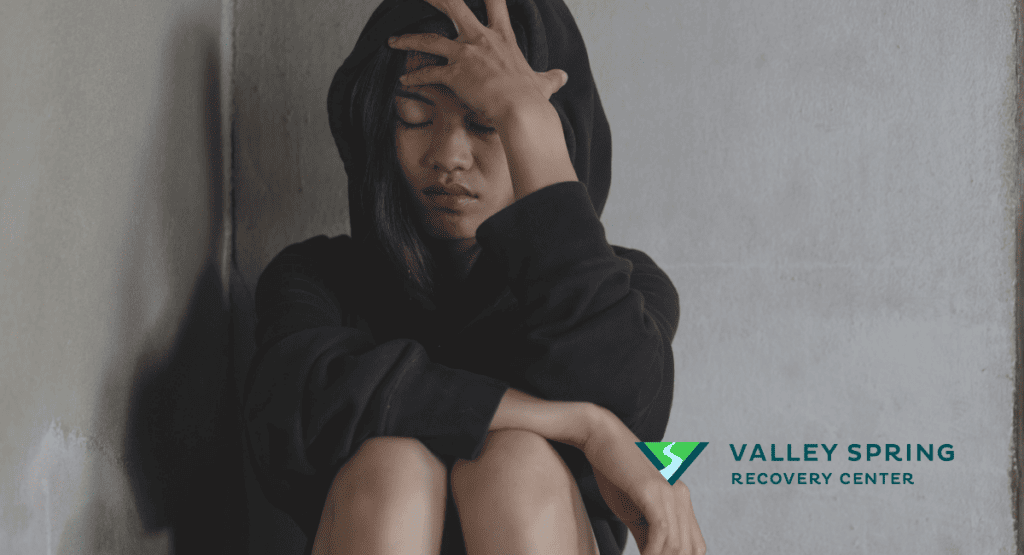
PCP addiction symptoms encompass physical, behavioral, and emotional changes, offering a comprehensive view of its profound effects on individuals.
Early Symptoms
- Increased tolerance to PCP, requiring higher doses for the same effects.
- Frequent cravings for the drug.
- Unsuccessful attempts to quit or cut down on PCP use.
- Spending a significant amount of time obtaining, using, or recovering from the effects of PCP.
- Neglecting important responsibilities or social activities due to PCP use.
- Continued PCP use despite knowing it’s causing or worsening physical or psychological problems.
- Withdrawal symptoms when attempting to stop using PCP, such as depression, anxiety, and agitation.
Advanced Symptoms
- Severe cognitive impairments
- Psychosis and delusional thinking
- Complete social isolation
- Inability to maintain employment or relationships
- Frequent hospitalizations or medical complications
- Escalation to intravenous (IV) use
- High risk of self-harm or suicidal tendencies
- Drastic decline in physical health
- Legal problems and criminal activity related to PCP use
- Loss of touch with reality and a chaotic lifestyle.
What is the Prevalence of PCP Addiction?
PCP addiction’s prevalence persists as a pressing concern, with its addictive nature and treatment complexities impacting individuals and communities.
PCP addiction statistics are not as widely reported or studied compared to other substances like opioids, cocaine, or marijuana. According to NCBI PCP abuse has declined significantly from its peak in the 1970s and 1980s, making it a relatively less prevalent drug of abuse compared to others.
Since statistics on PCP addiction can vary by region and may not be consistently reported, it’s challenging to provide up-to-date global figures. However, some trends and observations up to that point included:
- Regional Variances: PCP abuse had been more prevalent in certain areas of the United States, particularly urban areas, but was less common in other parts of the world.
- Declining Use: Overall, the use of PCP has been decreasing, partly due to increased awareness of its dangers, stricter legal controls, and the emergence of other illicit substances.
- Limited Treatment Data: Information about PCP addiction treatment and recovery rates was limited compared to other drugs, and there weren’t as many specialized treatment programs available.
- Prevalence: PCP abuse has significantly declined in the United States since its peak in the 1970s and 1980s. It became a relatively rare drug of abuse compared to substances like opioids and stimulants.
- Treatment Admissions: According to the Substance Abuse and Mental Health Services Administration (SAMHSA), the number of individuals entering substance abuse treatment programs for PCP as their primary drug of abuse has decreased over the years.
- Emergency Room Visits: PCP-related emergency room visits had also declined, but those who did present with PCP-related issues often exhibited severe symptoms and required medical attention.
- Legal Status: PCP is classified as a Schedule II controlled substance in the United States, making it illegal to manufacture, possess, or distribute for non-medical purposes.
- Law Enforcement: Law enforcement agencies continued to make occasional seizures of PCP, suggesting that some level of illegal production and distribution still existed.
What Is The Science Behind PCP Addiction and its effect on the brain?
Phencyclidine (PCP) exerts a profound influence on the brain through its interactions with neurotransmitter systems, primarily the glutamate system. When PCP is ingested, it disrupts normal glutamate signaling by binding to NMDA (N-methyl-D-aspartate) receptors in the brain.
This interference results in the dissociative and hallucinogenic effects characteristic of PCP use, as it disrupts the brain’s ability to process sensory information and maintain coherent thought processes. Additionally, PCP’s impact on the dopamine and serotonin systems contributes to mood alterations and the potential for addiction.
Repeated use of PCP may lead to long-term cognitive impairments and psychological consequences, making it essential to comprehend these intricate neurobiological effects to address PCP addiction and its associated risks effectively.
What Are The Effects of PCP Addiction?
Short-Term Effects of PCP abuse and addiction are listed below:
- Hallucinations
- Distorted perceptions of reality
- Agitation and aggressive behavior
- Numbness and loss of physical coordination
- Impaired judgment and decision-making
- Panic attacks and extreme anxiety
- Mood swings and emotional instability
- Memory loss and cognitive impairments
- Rapid eye movements (nystagmus)
- Increased heart rate and blood pressure.
The Long-Term Effects of PCP Dependence and addiction are listed below:
- Persistent memory and cognitive problems
- Speech difficulties
- Depression and anxiety disorders
- Social isolation
- Impaired motor skills
- Recurrent hallucinations or flashbacks
- Increased risk of accidents and injuries
- Kidney and bladder problems
- Weight loss and malnutrition
- Co-occurring mental health disorders.
What Are The Withdrawal Challenges?
The PCP withdrawal symptoms are listed below:
- Emotional Turmoil: Intense depression, anxiety, and hallucinations.
- Cravings: Strong urges to use PCP again.
- Restlessness: Agitation, mood swings, and sleep disturbances.
- Cognitive Issues: Problems with concentration and memory.
- Suicidal Thoughts: Severe depression may lead to self-harm tendencies.
When Did PCP Become Popular?
PCP became popular In the 1960s and 1970s, PCP gained notoriety as a recreational drug, according to a 2006 study by Science Direct. Its hallucinogenic and dissociative properties led to its popularity, especially among some subcultures. Unfortunately, PCP use often results in dangerous and unpredictable behavior, leading to accidents, injuries, and criminal activity.
The history of Phencyclidine (PCP), commonly known as “angel dust,” starts when it was first synthesized in the 1950s by pharmaceutical company Parke-Davis. PCP was first developed as a dissociative anesthetic for medical use and was marketed under the brand name Sernyl. However, due to its severe side effects, including agitation, hallucinations, and delirium, it was quickly discontinued for human medical applications in the 1960s.
As a result of its risks and adverse effects, PCP was classified as a Schedule II controlled substance in the United States in 1978, making it illegal to manufacture, possess, or distribute for non-medical purposes. Despite legal restrictions, PCP abuse continued, albeit at a reduced scale compared to its peak in the 1970s and 1980s.
Today, PCP remains a controlled substance in many countries, and its use is associated with a range of health and social problems. It serves as a cautionary example of a substance initially developed for medical purposes but ultimately leading to significant public health challenges due to its abuse potential..
What Are The Treatment Options For PCP Addiction?

The treatment for PCP addiction involves a variety of approaches but PCP does have physical withdrawal symptoms which make it appropriate for most PCP addicts to start their recovery journey in residential inpatient treatment. Below are some of the effective treatment approaches for treating PCP addiction:
1) Inpatient Treatment
Inpatient treatment for PCP addiction, often referred to as residential treatment, involves individuals staying at a specialized facility for an extended period to receive intensive care and support for their addiction. Here’s what it typically involves:
- Medical Assessment: Upon admission, individuals undergo a thorough medical assessment to evaluate their physical and mental health, including any complications related to PCP use.
- Detoxification: In cases where individuals are physically dependent on PCP, detoxification may be necessary to manage withdrawal symptoms. Medical supervision ensures safety during this process.
- Structured Environment: Inpatient programs provide a highly structured and controlled environment, with a focus on abstinence and adherence to treatment plans.
- Individual and Group Therapy: A range of evidence-based therapies is offered, including cognitive-behavioral therapy (CBT), individual counseling, group therapy, and psychoeducation. These sessions address addiction-related issues, coping strategies, and relapse prevention.
- Medical and Psychiatric Care: Inpatient facilities have medical and psychiatric professionals who can address both addiction and any co-occurring mental health disorders.
- Peer Support: Patients often benefit from interaction with peers who are facing similar challenges. Sharing experiences and supporting one another can be a valuable aspect of inpatient treatment.
- Skill-Building: Programs often focus on life skills, such as stress management, communication, and problem-solving, to prepare individuals for a successful transition to daily life after treatment.
- Aftercare Planning: Discharge planning is a crucial component of inpatient treatment, ensuring that individuals have a plan in place for continued support and recovery once they leave the facility.
2) Outpatient Treatment
Outpatient treatment for PCP addiction provides individuals with addiction support and therapy while allowing them to live at home and maintain their daily responsibilities. Here’s what outpatient treatment typically involves:
- Assessment: The process begins with a comprehensive assessment to determine the individual’s needs, including the severity of their PCP addiction and any co-occurring mental health issues.
- Individual and Group Counseling: Outpatient programs offer individual counseling sessions where clients work one-on-one with a therapist to address their specific issues related to PCP addiction. Group therapy sessions provide peer support and a sense of community among individuals facing similar challenges.
- Psychoeducation: Clients receive education about addiction, its effects on the brain, coping strategies, and relapse prevention techniques.
- Family Involvement: Family therapy or counseling may be included to address family dynamics, educate loved ones about addiction, and improve the support system.
- Drug Testing: Random drug testing may be part of the program to ensure compliance with abstinence and monitor progress.
- Medication-Assisted Treatment (MAT): In some cases, medication may be prescribed to help manage withdrawal symptoms or cravings. However, MAT for PCP addiction is less common than for other substances like opioids.
- Flexibility: Outpatient treatment allows clients to maintain work, school, or family commitments, making it a more flexible option.
What are the success rates for PCP recovery?
Success rates in outpatient treatment for PCP addiction can vary widely and depend on several factors:
- Individual Motivation
- Severity of Addiction
- Support System
- Co-Occurring Disorders
- Program Quality
PCP addiction presents unique challenges due to the drug’s dissociative and hallucinogenic effects, but recovery is possible with the right treatment and support.
Understanding the risks, seeking help early, and embracing a holistic approach to treatment can significantly improve the chances of overcoming PCP addiction and achieving lasting sobriety.
Support systems play a pivotal role in the journey of individuals facing PCP addiction. These systems, which can include family, friends, and professional networks, offer crucial emotional, practical, and motivational support.
They provide a safety net during the often challenging process of recovery, help individuals stay motivated to overcome addiction, and offer a sense of belonging and understanding.
Support systems not only enhance treatment outcomes but also contribute to the overall well-being and stability of those working to achieve and maintain sobriety from PCP.
Sources
https://www.sciencedirect.com/science/article/abs/pii/S104727970500311X
https://www.ncbi.nlm.nih.gov/pmc/articles/PMC2859735/
PCP Addiction, Side Effects and Treatment. DrugAbuse.com, https://drugabuse.com/drugs/hallucinogens/pcp/
Dr. Michael Olla
All author postsShare This Post

